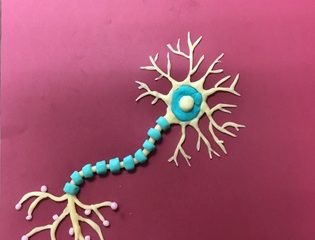Here is what I am reading today:
“The ability to discriminate spontaneous from planned (rehearsed) behaviour is important when inferring others’ intentions in everyday situations, for example, when judging whether someone’s behaviour is calculated and intended to deceive. In order to examine such basic mechanisms of social abilities in controlled settings, Peter Keller, head of the research group “Music Cognition and Action” at the Max Planck Institute for Human Cognitive and Brain Sciences, Leipzig and his research associate Annerose Engel investigate musical constellations ranging from solos and duos to large musical ensembles. In a recent study, they investigated the brain activity of jazz musicians while these musicians listened to short excerpts of improvised melodies or rehearsed versions of the same melodies. The listeners judged whether each heard melody was improvised.”
“The findings, reported April 28 in the American Journal of Human Genetics, are based on a genetic analysis of in one Turkish family and two Pakistani families with offspring born with the most severe form of microcephaly. The children have brains just 10 percent of normal size. They also lacked the normal cortical architecture that is a hallmark of the human brain. This combination of factors has not been seen in other genes associated with the development of the human brain, the authors note.”
“Artists and engineers have come together to demonstrate that digital technology can be romantic as well as practical.”
“Our own social status influences the way our brains respond to others of higher or lower rank, according to a new study reported online on April 28 in Current Biology. People of higher subjective socioeconomic status show greater brain activity in response to other high-ranked individuals, while those with lower status have a greater response to other low-status individuals.”
“Neurocuisine is a blog about the neuroscience behind the dining experience, from cooking to eating. The author refers to the primary scientific literature to try and answer some interesting questions about our daily encounters with food. What happens in our brain when we come across a new flavor? What goes on the brain of a chef during the creative process? What are the psychological processes involved when rating a dining experience? Is our diet related to the onset of certain diseases? Does chocolate realy help with depression?”




3 Comments
mdean · May 1, 2011 at 5:31 pm
The article about the “Lover’s Box” is interesting, but I really do not think the idea will catch. I don’t think enough people will be interested in buying it, and therefore there will be no capital to continue the production.
Robert Landon · May 1, 2011 at 10:09 pm
The article on microcephaly was very interesting. I’d be eager to see if this gene is linked to any other forms of irregular development in the brain. Either way, as microcephaly is very rare, it appears that there are many, many protective measures to assure proper expression of this gene! Further, I’m curious as to why the three subjects that were found to have this disorder are located within close geographical proximity to each other, and if environment plays a factor in the inhibition of proper gene expression of this critical gene.
Vix · May 21, 2011 at 5:00 pm
Yes. I enjoy coloring Easter eggs every year and show my artistic traits. That happens to be the egg I made for the 20th anniversary of Sonic the Hedgehog. As we all know, I am the one and only member in this family who plays Sonic games (No offense to anyone but this is for safety reasons, as I’m always protecting my family against hideous fanbases you see on the Internet).
I also made a couple of Yoshi eggs, a VixDojo egg, some animal print eggs and a “God Bless America” easter egg (Just in time for the 10th anniversary of 9/11) in case you did not notice before.
Comments are closed.